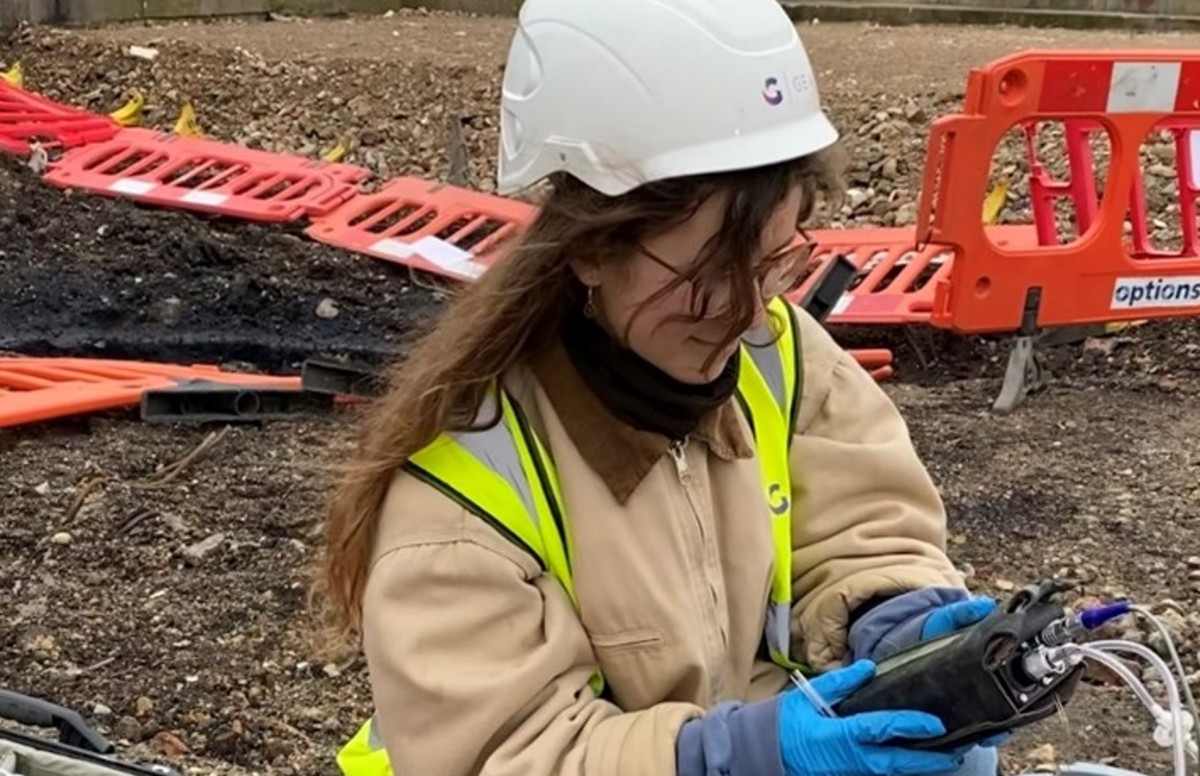The Greatest Guide To Geotheta
The Greatest Guide To Geotheta
Blog Article
8 Easy Facts About Geotheta Described
Table of ContentsAn Unbiased View of GeothetaSome Of GeothetaSome Known Details About Geotheta Some Known Factual Statements About Geotheta
They team up with civil designers, architectural designers, engineers, and other professionals to integrate geotechnical factors to consider right into the general project design and construction process. This calls for reliable team effort, coordination, and communication to make certain that the geotechnical elements align with the project objectives and meet governing needs.Mining & Materials Design: Principles of drilling, infiltration rates, and elements influencing the option of exploration technique. Blowing up techniques in surface area and underground functions. Mechanical and continual techniques to fragmentation, including longwall shearing and fullface boring.
Integrated analysis of fragmentation and comminution procedures. Provided by: Mining & Products Engineering.
Little Known Questions About Geotheta.
Bachelor's degree programs in civil, geotechnical, geological, and ecological design usually last 4 years and consist of basic education and learning courses in English, social scientific research, and the liberal arts, as well as programs in innovative maths, structural geology, and fluid mineralogy. (https://geotheta-46958753.hubspotpagebuilder.com/blog/unlocking-the-future-with-top-notch-geotechnical-engineers-at-geotheta)
Geotechnical design involves the evaluation of the dirt and rock conditions at a certain site, and their ramifications for the development of that site. As the majority of structures count on the ground for assistance, it is without surprise that a thorough understanding of the ground conditions, and the suitability of structure systems, are essential to the long-term stability and performance of the building or structure.
Being experts in the examination of geological formations and ground behaviour, geotechnical engineers perform scientific examinations and screening to recognize the influence these geological developments may have on the design and building and construction of structure, civil and framework tasks. This experience is essential for the layout and construction of buildings, roads, tunnels, dams, bridges, and water system and sewer system.
The geotechnical group at Douglas Allies consistently seek advice from engineers, layout designers, programmers, and contractors to make suggestions on style and advancement proposals to guarantee that the developed frameworks are appropriately created for the ground problems. As an example, the layout of footing systems requires to think about the weight of the structure, the ability of the ground to support that weight together with movement resistances and effective construction.
8 Easy Facts About Geotheta Shown
This job is substantially streamlined by the use our Douglas Map geospatial system which makes this info readily accessible in a very easy to utilize web internet browser user interface. A geotechnical engineer will certainly direct the drilling of boreholes and examination pits to collect dirt and other examples, and also assess surface area features Visit This Link and ground exposures to create a geotechnical design of the subsurface problems.
Relying on the project type and ground conditions ran into, lab screening might to name a few points examine strength, compressibility, reactivity and/or leaks in the structure of soil and rock samples. Hereafter data is accumulated and looked at, the results are used for a geotechnical model of the site, which is typically offered as areas throughout the site.

A geotechnical examination by nature can just assess the ground problems at the places drilled or dug deep into. Natural variations in dirt and rock problems can occur throughout a website and between test places. It is therefore excellent technique that the geotechnical engineer be retained throughout construction of the job to give on-site verification that the ground problems come across are constant with the assumptions and suggestions given in the geotechnical investigation record.
The Single Strategy To Use For Geotheta
Geotechnical engineers use their comprehensive knowledge of dirt and rock to examine risk and solve problems on diverse facilities projectsGeotechnical design is a specialist branch of civil design which considers the behaviour of planet materials and the application of dirt and rock mechanics. Tailings Engineer. As a geotechnical designer, you will assess the physical, mechanical and chemical homes of dirt and rock in order to make foundations, maintaining frameworks and earthworks
Geotechnical engineering is closely connected to and overlaps with, both design geology and ground engineering - https://www.evernote.com/shard/s342/sh/0ddde0a2-417b-669e-3d11-8f53bf2073ba/dxCfPcosgpFcDl9WAXonEVeNbxWt1i_y0aMcgTcK_KXcXyxfIS3apQYAgA. It's feasible to specialise in geotechnics or benefit a geotechnical business yet be called an engineering rock hound or a ground designer. As a geotechnical engineer, you'll require to: build and keep relationships with customers and other experts associated with the site, throughout each projectmaintain safety and security criteria on website bear in mind price ramifications when you make recommendationsstudy geological maps and aerial photos from a variety of sources and from various time periodsexamine construction plans to see how practical they are based on your understanding of the siteinvestigate threats or geological threats for the sitesearch for ecologically delicate attributes, such as land fill begin to establish factual and expository ground modelsplan area investigationsdrill and evaluate examples of bedrock, dirt, groundwater and added materials manage various other experts on sitesolve technological problems as they emerge, such as unexpected frameworks at drill sitesmonitor problems during and after construction to make certain structures are steady in the brief and long termadding information gathered on site to your preliminary researchcreating geotechnical computations, illustrations, and 2 or three-dimensional computer designs interpreting the datamaking recommendations about the suggested usage of the site

Report this page